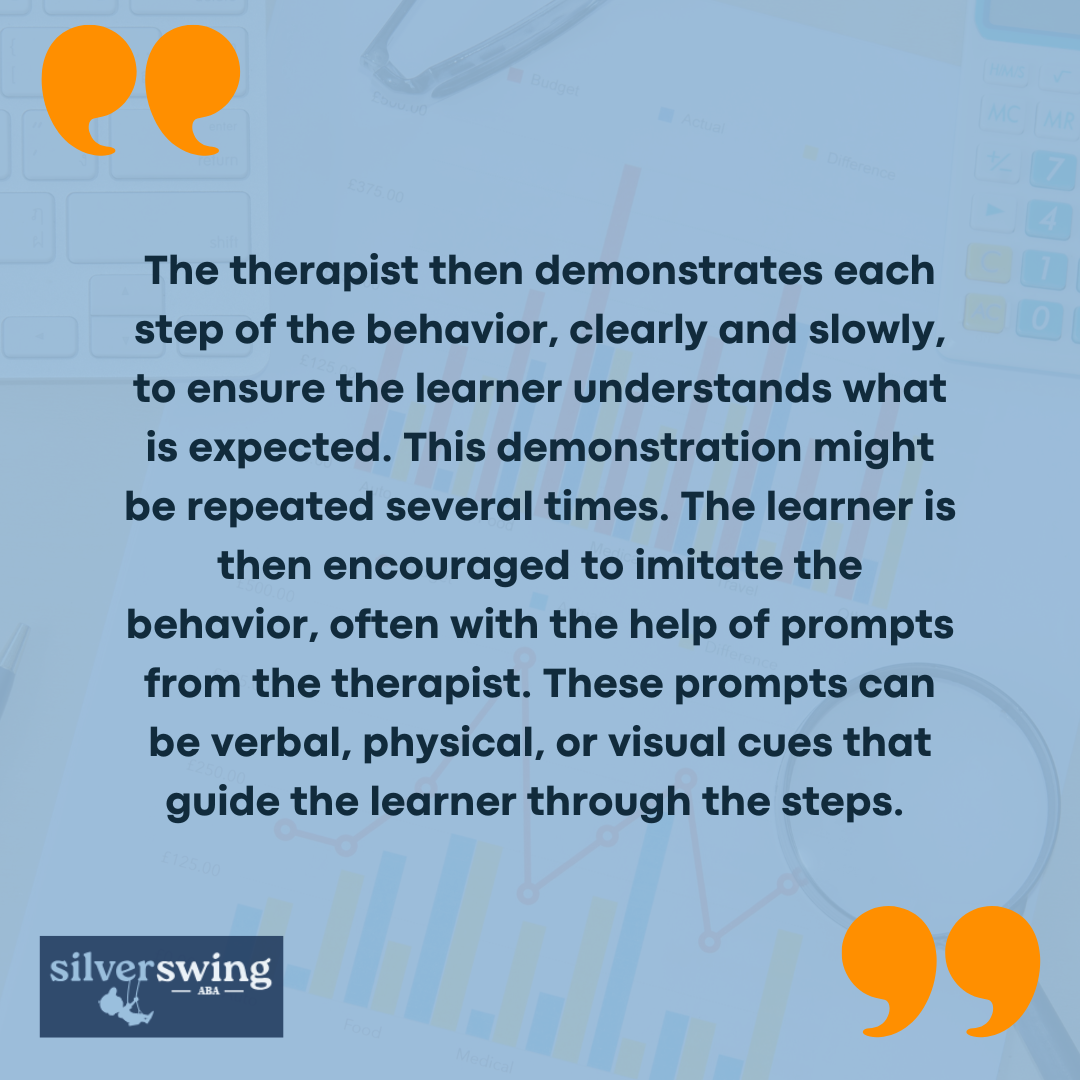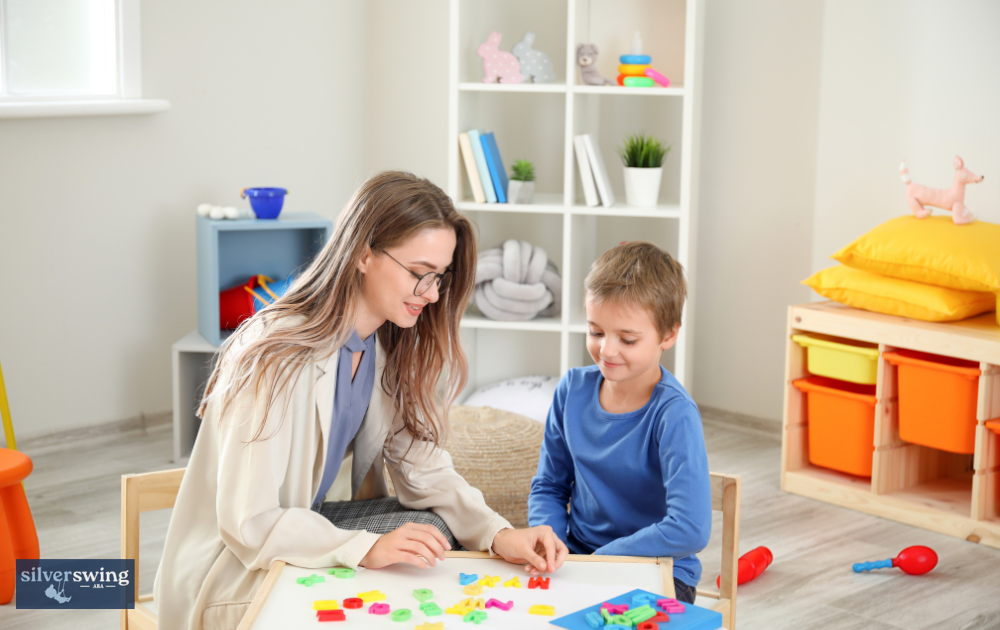Applied Behavior Analysis (ABA) therapy is a well-known and effective treatment method for autistic individuals and other developmental disorders. It uses principles of learning and behavior to bring about positive changes in behavior.
One of the key techniques used in ABA therapy is behavior modeling.
This article will explain what behavior modeling is, how it is used in ABA therapy, and why it is an essential tool for improving the lives of individuals with developmental challenges.

Understanding Behavior Modeling
Behavior modeling, at its core, is a teaching method where the therapist demonstrates a desired behavior, and the learner observes and imitates that behavior. This technique is grounded in the social learning theory proposed by psychologist Albert Bandura. Bandura’s theory suggests that people can learn new behaviors by observing others, especially when those behaviors are followed by positive reinforcement.
Behavior modeling involves several critical components: observation, imitation, reinforcement, and practice. Initially, the learner watches the therapist or another individual perform a specific behavior.
Following this, the learner attempts to replicate the observed behavior. Positive feedback is then given to the learner to encourage the behavior. Finally, the learner practices the behavior multiple times to reinforce learning and increase proficiency.

How Behavior Modeling is Used in ABA Therapy
In ABA therapy, behavior modeling is employed to teach a wide range of skills, from basic communication to complex social interactions. The process typically begins with the therapist identifying a specific behavior that needs to be taught or improved, such as making eye contact or using polite greetings. Once the target behavior is identified, it is broken down into smaller, manageable steps.
For example, if the goal is to teach a child to tie their shoes, the steps might include picking up the laces, crossing them, making loops, and pulling the loops tight.

Each time the learner successfully imitates the behavior, they receive positive reinforcement, which could be in the form of verbal praise, a favorite activity, or a small reward.
Over time, the therapist gradually reduces the use of prompts, allowing the learner to perform the behavior more independently. The learner also practices the behavior in different settings and with different people to ensure that the skill is generalized and can be used in various contexts.
Benefits of Behavior Modeling in ABA Therapy
Behavior modeling offers several benefits that make it an effective tool in ABA therapy. Since the learner can see the behavior being performed, it becomes easier to understand and replicate. This is especially helpful for individuals who may have difficulty with abstract concepts. Additionally, many individuals with ASD are visual learners, and seeing a behavior demonstrated provides visual support that can enhance learning.
By breaking down behaviors into small steps and gradually building up to the complete behavior, learners can achieve success at each stage, which builds confidence and motivation. Immediate positive feedback reinforces the desired behavior, making it more likely that the learner will continue to practice and improve.
Furthermore, by practicing the behavior in various settings and with different people, the learner can apply the skill in real-life situations, which is the ultimate goal of ABA therapy.

Examples of Behavior Modeling in ABA Therapy
Behavior modeling can be used to teach a variety of skills. For example, to teach social skills, a therapist might model how to initiate a conversation, take turns during play, or respond to social cues. The learner observes these interactions and practices them with the therapist’s guidance.
Similarly, for non-verbal children or those with limited speech, a therapist might model the use of sign language or communication devices. The child then imitates these actions to communicate their needs and thoughts.
Everyday tasks such as brushing teeth, dressing, or following a routine can also be taught through behavior modeling. The therapist demonstrates each step, and the learner practices until they can perform the task independently. Behavior modeling can also be used to address problem behaviors by demonstrating and reinforcing appropriate alternatives.
For instance, if a child tends to scream when frustrated, the therapist might model how to use words or gestures to express frustration instead.
Challenges and Considerations
While behavior modeling is a powerful tool, it is not without challenges. Consistency is crucial for behavior modeling to be effective. Therapists, parents, and caregivers must all be on the same page and use the same techniques.
Additionally, each learner is unique, and what works for one individual might not work for another. Therapists must tailor their approach to fit the learner’s specific needs and abilities. Learning new behaviors takes time and patience. It’s important to celebrate small successes and remain persistent, even when progress seems slow.
Behavior modeling is an essential component of ABA therapy, offering a structured and effective way to teach new behaviors and skills. By observing, imitating, and reinforcing desired behaviors, individuals with developmental challenges can make significant strides in their ability to communicate, socialize, and perform daily tasks.
With consistent application and a tailored approach, behavior modeling can help learners achieve greater independence and improve their quality of life.




